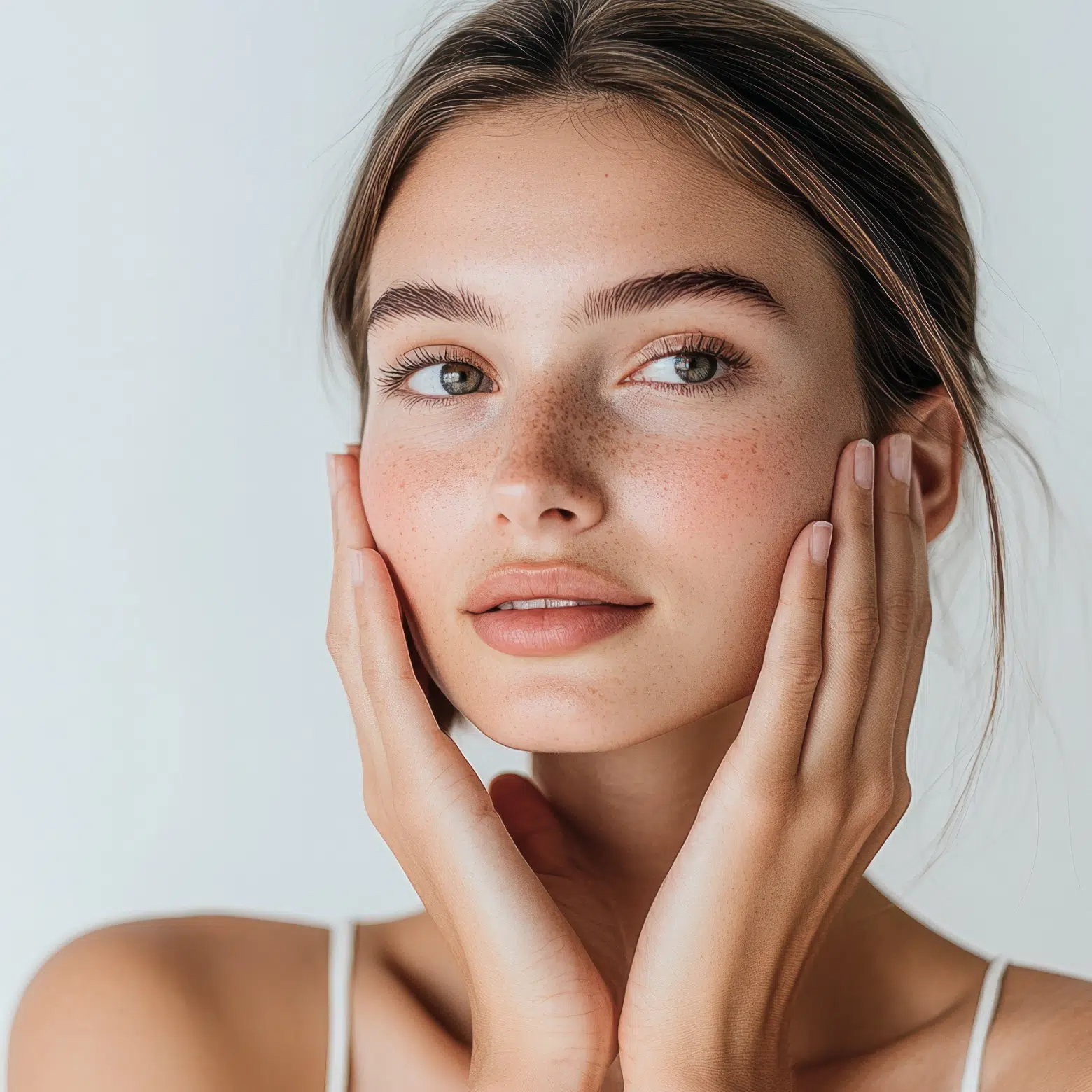Peeling
A multitude of external factors aggress our skin every day. They cause changes in the texture, color, and elasticity of exposed areas. To prevent and correct these imperfections related to photoaging, we can resort to several non-invasive rejuvenation techniques.
Among these treatments, various types of peeling have proven effective.


What is a peeling in aesthetic medicine?
Peeling is an aesthetic medicine treatment that involves applying a chemical solution to the skin to exfoliate damaged layers. This process stimulates dermal regeneration, thus improving its quality and appearance. Peelings can treat various skin issues, such as spots, wrinkles, acne scars, and texture irregularities, resulting in smoother, more even, and rejuvenated skin.
Types of peelings
There are several types of peelings, each suited to specific needs :
- Superficial peeling uses mild acids, such as glycolic acid or salicylic acid, to exfoliate the superficial layer of the skin. Ideal for a radiant boost, it treats minor imperfections and evens out the complexion
- Medium peeling employs stronger acids, like trichloroacetic acid (TCA), to reach the middle layers of the skin. It is effective for treating fine wrinkles, pigment spots, and superficial scars
- Deep peeling uses substances like phenol to penetrate deeply into the skin. This type of peeling is reserved for severe skin damage, such as deep wrinkles and significant scars. It requires a longer recovery time
Indications for peeling
Peelings are indicated to correct various skin issues. Spots, fine lines, stretch marks, small vessels, skin texture, and radiance can be improved. All skin types can be treated. A thorough evaluation of your skin condition during the first consultation allows the surgeon to determine the peeling suited to your needs. Let us advise you on the most appropriate treatment plan for your skin.
Precautions to take before a peeling session
Before a peeling session, certain precautions must be taken to ensure optimal results and minimize risks. It is recommended to avoid sun exposure and artificial UV rays for at least two weeks before the treatment. The use of creams containing retinoids or strong acids should be suspended a few days before the care, as well as aggressive aesthetic techniques.
How does a peeling session at Leman Aesthetic Clinic take place?
Upon your arrival at Leman Aesthetic Clinic, your skin will be thoroughly cleansed to remove any traces of makeup, sebum, or impurities. Then, the type of peeling suitable for your needs will be evenly applied to the treatment area.
Medium Peeling
Duration: 4 sessions of 20-30 minutes
No anesthesia or social downtime required.
This type of peeling usually requires 4 sessions for optimal results.
Anti-spot Peeling
Duration: 1 session of 30 minutes.
This treatment is designed to specifically target pigment spots and can often be performed in a single session.
Aftercare for Peeling
After a peeling, it is normal to experience redness and slight swelling, similar to a sunburn. The skin peels slightly for a few days, revealing a smoother and more radiant epidermis. It is crucial to avoid sun exposure and apply a high-SPF sunscreen in the following weeks to protect the sensitized skin tissues.
Results After Peeling
The results of a peeling become apparent as the dermis regenerates. The noticeable improvement in skin texture, reduction in pigment spots, and superficial wrinkles provide an overall more radiant and even complexion. The effects of the peeling extend over several months if you follow a complete treatment program and adopt a good dermocosmetic routine.
What is the price of a peeling at Leman Aesthetic Clinic?
The price of a peeling at Leman Aesthetic Clinic is 250 CHF. A complete protocol of 4 sessions is offered at 750 CHF, providing a more economical solution for patients needing multiple treatments.